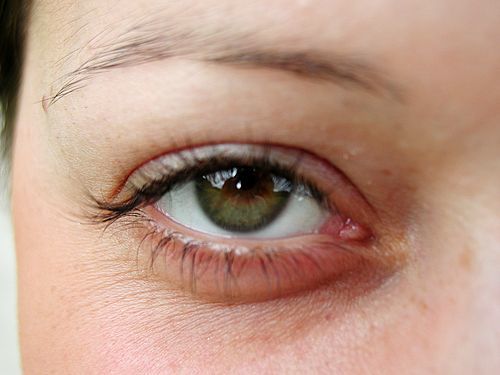 If you’ve read the Bible, you will notice that if someone were to make an all-out accurate portrayal of it on the big screen, it would easily be rated R or worse. From the nakedness of Adam and Eve in the garden to the brutally violent crucifixion of Jesus, the Bible is one of the most graphic narratives in history.
If you’ve read the Bible, you will notice that if someone were to make an all-out accurate portrayal of it on the big screen, it would easily be rated R or worse. From the nakedness of Adam and Eve in the garden to the brutally violent crucifixion of Jesus, the Bible is one of the most graphic narratives in history.
And while many discussions can stem from this point, I want to focus on one direction right now: how to introduce children to this “loaded” book. As Christians, we want to train and raise up our children to learn the Bible and intimately know the God of the Bible. But for them to fully know the Bible, they have to come face to face with “R-rated” stuff.
Take these famous kid-story dilemmas, for instance:
- We always teach kids about David and Goliath, but at what age do we let them know that David chopped the guy’s head off (imagine a Disney movie depicting such)?
- One of the most popular stories for kids is Noah’s Ark. Do we ever explain to the kids about the legions of people (of all ages) who “didn’t make it” in the flood?
- Take the cheery story of Pharaoh’s daughter finding Moses in a basket in the river. Did I fail to mention that he was put in the basket to avoid becoming a victim to infanticide? Anyone interested in explaining infanticide to a group of children?
These are just a few examples from well-known children’s stories. I haven’t mentioned the plagues, the nature of a 1st century crucifixion, Jael driving a tent peg through a dude’s temple (subsequently fatally pinning him to the ground), the extremely erotic descriptions in Song of Solomon, and that time when the prophet Elisha called on bears to maul a group of youth who were taunting his baldness (2 Kings 2:24).
Yeah, the Bible is pretty scary.
Scholastic and The American Bible Society have put out a Bible for toddlers called My First Read and Learn Bible. My toddler loves it. She always wants to read her “bi-beh.” And we’re stoked that she wants to read her Bible. I got looking through it and realized that ALL traces of bad or negative things (and a few other important things, like resurrection) are removed…..
- Adam and Eve are happy in the garden and are never shown sinning or falling away from God.
- Noah and the animals are happy in the ark and float around in the rain.
- God parts the Red Sea and “God’s people were free” (no mention of the pursuing army’s demise).
- The book ends with children sitting on Jesus’ lap with the words, “He will always be our friend.” No cross, no empty tomb, no resurrection, no Pentecost, and no early church movement.
I get it. I understand that they want to avoid the R-rated stuff and not freak out the toddlers. Yet I’m disappointed that they completely avoided the empty tomb (among other New Testament themes), because I believe that can be age-appropriately presented to a toddler (of course they won’t understand much about it, but the intelligence of any age child is usually beyond what we think).
So this begs the big question: At what age do we introduce the dark and dirty stuff of the Bible to our kids?
I personally think that the toddler Bible I just mentioned went too far in their attempt to be age-appropriate. Yet I also know that when I teach a group of early elementary schoolers, I don’t want to exegete and interpret the sexual overtones of Song of Solomon.
My current opinion is that most of us are a little too careful and don’t teach kids the whole Bible in all its gory glory. We censor it too much. Goodness, the entire message of the Gospel centers around themes of sin, death, and resurrection. Kids are humans, and they need to come to grips with these realities. If we don’t teach them about the realities of life at age-appropriate times, then someone else (peers, school, etc.) will.
So where do you draw the line? I think each category of graphicness requires its own discussion about the age-appropriate time to introduce it to kids. And most kids are ready to learn about something as soon as they indicate that they are curious or interested in learning about it.
My prayer is that parents can take the lead and read the Bible with their kids (all parts of the Bible) and be ready to answer when the kid asks about topics like infanticide and crucifixion. As parents and teachers, we don’t need to rush certain subjects, but we do want to be ready when they ask – and proactive about the most important of issues (like sin and death).
I’m interested in your feedback, so please chime in….




7 responses to “The Bible is Rated R”
Hey Jesse,
The church I work at uses The Jesus Storybook Bible with their preschool group, and they LOVE it. Might be an interesting option to check out. From what I understand, it deals with several of the hard issues of Scripture in a child-appropriate way.
http://www.jesusstorybookbible.com
I have heard great things about the Jesus Storybook Bible. Would love to check it out.
By Betty Anne February 29, 2012 – 11:13 amFiona, you are a friend ineedd! And, using the wonderful wisdom of your words, our children can and must share in the spirit of Lent and Easter. Perhaps the bigger challenge is attempting to ensure that our storytellers learn and understand really understand how children think (concrete vs. abstract). I remember, as a young child who loved and was very familiar with Bible stories, being totally horrified at the thought that a father would agree to kill his child with a knife. To my dismay, I heard about a most unfortunate retelling of that lesson on our Christian radio station the other day that ended basically with the moral: Kids, be careful if you’re going into the woods with your father.I wonder how we best get the message through to pastors: Children’s stories are for children.
By Fiona Brownlee February 29, 2012 – 11:18 amKyle I like the use of this analogy. Staying coretcne for a 5 year old is important and this will help him make it real. Our use of words with children changes as they grow and learn. Having theological discussions with children is stretching for each of us and helps to clarify our own thoughts about the faith.
Hi Jesse,
I think any worldview eventually has to deal with the topic of good vs. evil. The Christian worldview ultimately handles that issue by presenting the drama of creation, fall, sacrifice, crucifixion, resurrection, and Spirit-filled life. One of the dangers I see in “My First Read and Learn Bible” (as you describe it here) is that it leaves unanswered the question of why there is evil in the world. If children learn, from the earliest of ages, that everything is happy and peaceful and pleasant, then the transition to more “adult” Christian spirituality may be more difficult.
Tara and I don’t have children, but my opinion is that we should begin introducing right vs. wrong, good vs. evil, righteousness vs. sinfulness at as early an age as possible. Age-appropriate instruction is crucial, of course, but in the end we shouldn’t hide from children (or adults!) the fact that the Bible has its darker moments. (Save the “rated R” stuff for when they’re teenagers, sure… but Bible reading for children should always be PG – with an emphasis on parental involvement – and never G.)
David, I love that summary, especially how “PG” means parental involvement in the Bible instruction journey.
I’m with David on this. The temptation is always there to make our kids think the world is a peaceful place and a bed of roses. If we let them live this way, the transition from childhood to adulthood will be difficult. We need to show them some of these things, but a piece at a time. This way, it won’t be so hard for them to learn these things. Sometimes it’s okay to let them read those devotional books we want them to stay away from